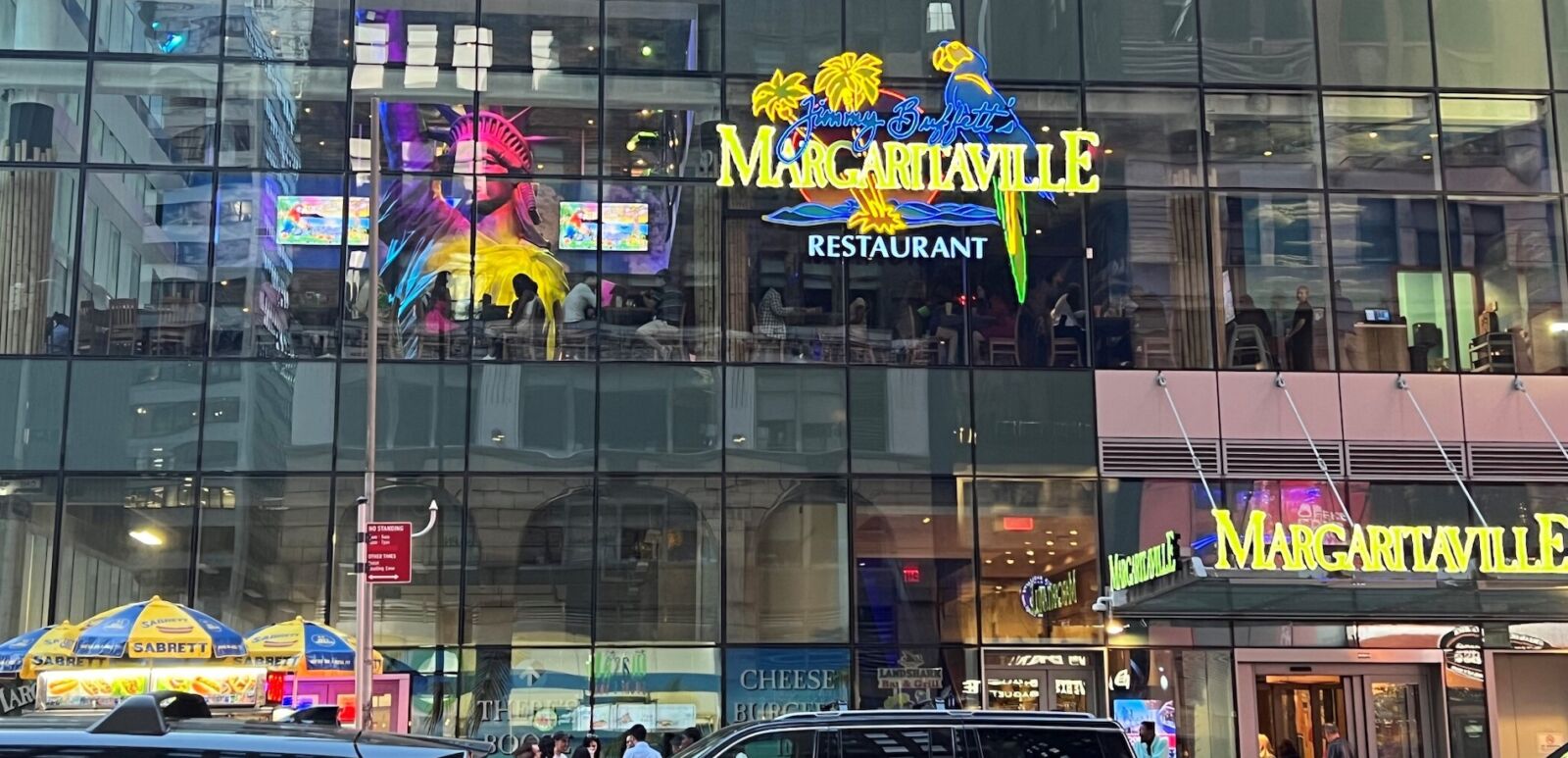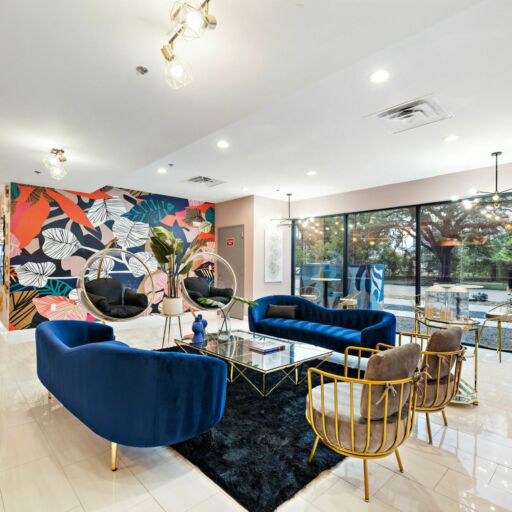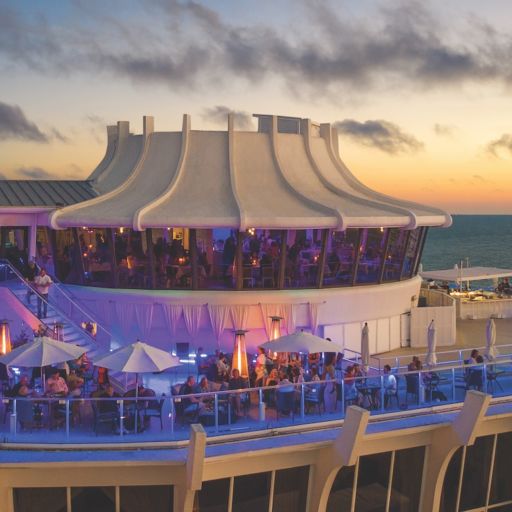From two blocks away you can see her, a beacon of hope, freedom and the American dream: Lady Liberty holding her margarita glass. On the corner of 40th Street and Seventh Avenue in New York City’s Times Square, she sits inside the glass tower that has been the property of paradise since early 2021. I’m talking about Jimmy Buffet’s Margaritaville.
If you’re under the age of 35 and live in New York City, it is likely that you’ve been asked to the Times Square Margaritaville. If not personally, the idea of Margaritaville is inescapable. YouTuber Eddy Burback ate at every location in the country, the TikTok algorithm spits out lavish plans of the Margaritaville one-stop bar crawl daily, and in early September tributes to the late Buffet flooded the internet. Whether out of genuine interest or for the bit, young people have been making a pilgrimage to the chain designed for snowbirds in droves.
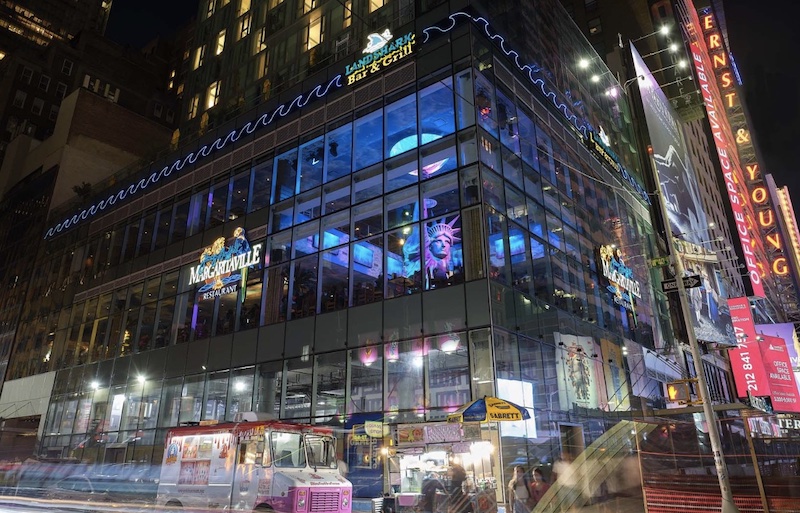
Between living with six roommates, working longer and longer hours and dodging cat-sized rats, it should be no surprise that city dwellers in their twenties are seeking cheap ways to escape reality. And it’s made some young New Yorkers hell-bent on turning the most populous city in America into a beach town. Surf lessons are plentiful in the Rockaways. Scuba diving lessons are being offered in the Hudson River. New York essayists like Zadie Smith are commanding: “Find your beach in the middle of the city. Find your beach no matter what else is happening. Do not be distracted from finding your beach even if…it is not actually there.” As a young, work-worn, twentysomething without Caribbean vacation money, the message was clear: I had to visit Margaritaville.
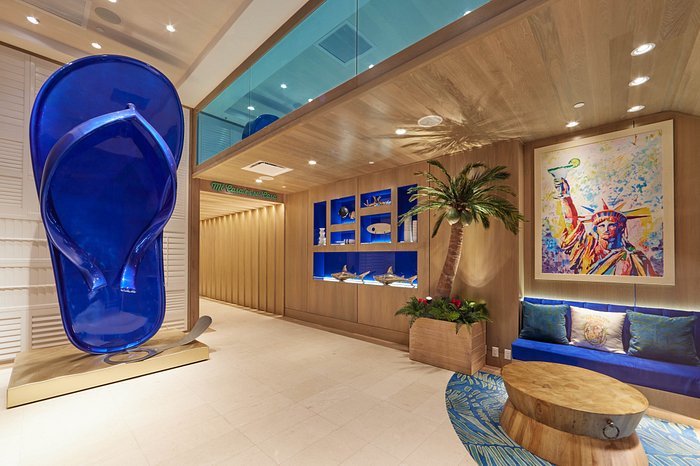
I have been to several a Margaritaville in my time, but never in New York and never of my own volition. Unlike many other Margaritaville resorts built in rural destinations, the Times Square location is spread up instead of out, with four bars and restaurants sprawled over 32 floors. The bottom floor acts as a gift shop and lobby, with a 12-foot flip-flop, fake palm tree and artistic photos of the Statue of Liberty and Brooklyn Bridge sharing the same space as beer koozies, key chains and T-shirts. Much like a Hollister circa 2008, Margaritaville is pumping its own eau du paradis into the air. Every minute or so, a puff of coconut-scented air wafts out of a small black device under their faux palms.
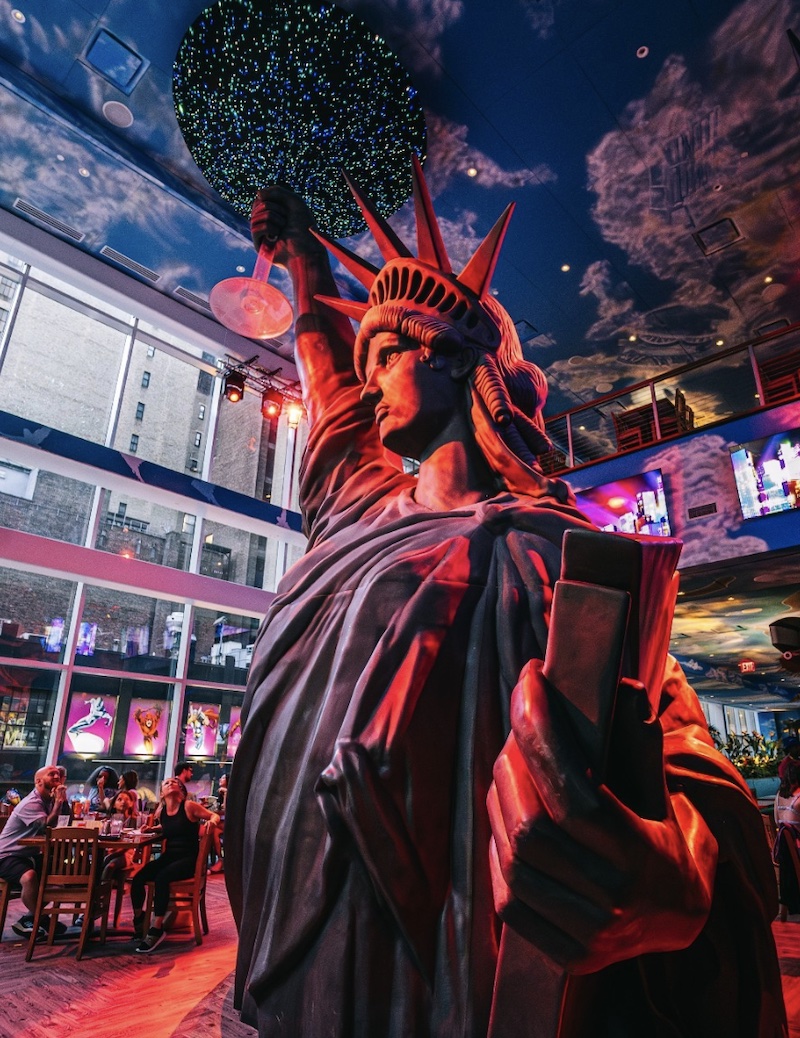
Ascending the first escalator into the Margaritaville restaurant and tiki bar is the closest thing Earth has to a stairway to heaven. Sure, you’ve already taken your photo with a jumbo flip-flop, read the “mi casa es su casa” literature painted about the place and taken a few hits of pure coconut, but when the looping soundtrack of Jimmy Buffet tunes engulfs you halfway up, any doubts about your quest are expelled. You are in paradise, and you suddenly need a novelty-sized margarita.
In Manhattan (and the chain’s other metropolitan locations), it is deceptively easy to veer into $20 margarita territory at virtually any other bar in the city. Margaritaville’s flagship cocktail — the “Perfect” margarita — will only set you back $13, a “Fins to the Left” $11.25, making it easy for the cheapest among us to be drawn in like flies to triple sec. If millennials and Gen Z are going to kill an industry, it won’t be reasonably priced cocktails.
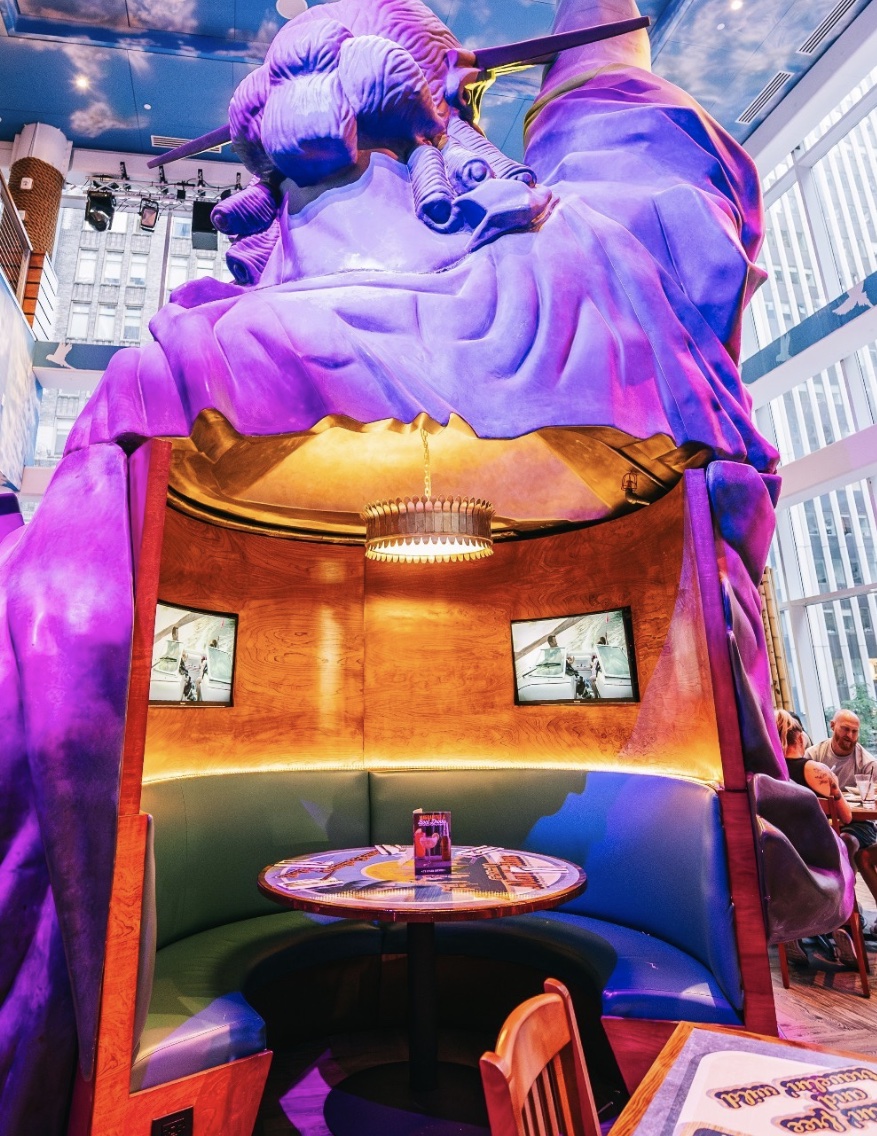
The Margaritaville restaurant and tiki bar is two floors tall, mostly to make room for the gargantuan Statue of Liberty replica. On a Thursday night, the restaurant was fuller than expected, a table of six people, also in their twenties, being led to the plush booth inside the statue. That’s right, you can sit inside of her, and if that’s not the American dream then I don’t know what is.
I ordered two margaritas and tried to focus on just one piece of the interior design, from the tiki torches to the many, many TV screens rolling random scenes of Buffet playing the guitar in the sand. The ceiling — decorated Sistine Chapel-style with salt shakers, guitars and the like — is especially pleasing. A good 15 minutes can be spent between drinks searching for hidden symbolism in the painted clouds.
Every hour on the hour — I know because it took me exactly an hour to finish two sickly sweet tequila monstrosities — there’s a light show projected onto the margarita glass in the big lady’s grip, the Buffet mashup cranked up. By marg two, I was transfixed, sinking deeper into the cult of relaxation.
While the restaurant wasn’t packed, the bathrooms at the Times Square resort were overflowing with girls in their twenties dressed well above the Margaritaville standard of “no shirt, no shoes, no problem.” Fully dressed sans Hawaiian shirts is the norm here. Three women in bucket hats aren’t an odd sight on the New York City subway, yet at the resort itself, my companions and I appeared to be too into the bit. Luckily, you’ll find that your hat is the last thing on your mind when tipsily humming along to Buffett’s “Why Don’t We Get Drunk and Screw?” in the Margaritaville restroom.
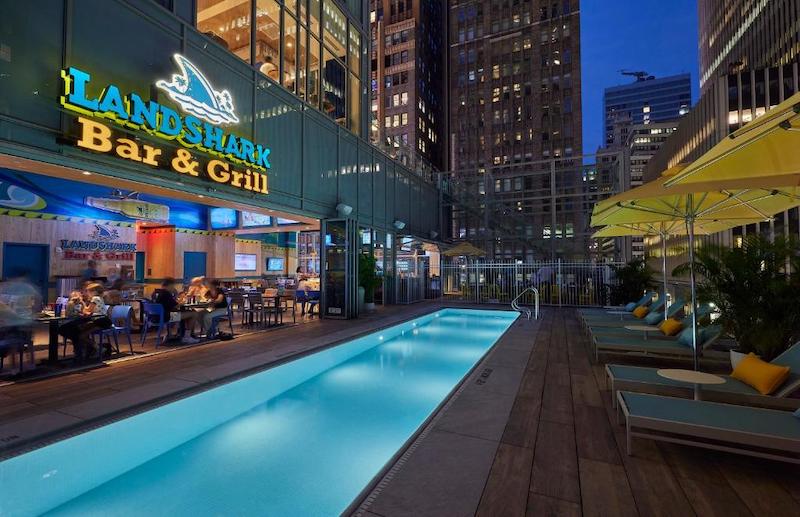
Much of the resort caters to groups of young people, myself included, roaming from bar to bar. Just a few floors up is the Landshark Bar, a half-indoor, half-outdoor bar and grill that shares real estate with the resort’s pool. For better or for worse, it is Times Square’s only outdoor pool. Only an outdoor glass staircase away from Landshark Bar, the 5 O’Clock Somewhere bar was closed. Evidently somewhere is not Manhattan.
This location’s fourth and final bar is a rooftop, which is much harder to get to if you aren’t willing to shell out a few hundred bucks to stay the night. If, like me, your budget is strictly marg related, you will have to find your way back out to 40th Street to find the street entrance, which is an inconspicuous metal door. This hallway is the dimmer below deck to the resort’s wacky charm, at the end of which is an elevator that has seen better days. This is the same elevator that is used in the resort; you will stop on every other floor to allow for carts of dishes to move about, revealing two very different Margaritavilles depending on which side the doors open on.

The rooftop bar is not suitable for bucket hats and Hawaiian shirts; the camp of Margaritaville disappears the second that elevator closes. The security guard wears a suit, patrons are dressed up and, most disappointingly, there is no “ho’s to Blame” or “tropical Pear-a-dise” on the upscale cocktail menu. There’s so little Buffett playing up there that it seems almost sacrilegious. I felt that way at least until I saw Him: a man in a large red hat, “Old Lives Matter” embroidered in white on the crown. This was the Margaritaville I knew. Even still, he was alone, a sea of millennial women who all could have been members of HAIM filling the booths around him. Their Margaritaville, their beach.
Departing at the end of the night feels like leaving any vacation: There’s a harsh return to real life that occurs when you stumble out of those doors back into the trash-ridden streets of Times Square, the illusion of paradise shattered. This is the appeal of the urban Margaritaville: a cheap tribute to vacation aesthetics. Families stay and parents retire at Margaritaville, but it seems to me that Zillenials — the generations who fear they may never stop working — are the most interested in role-playing retirement.
Stumbling down the dirty streets of Manhattan, an artificial coconut smell clinging to me, as Burback says in his tour of every Margaritaville in the country, “I was invincible, I could make a beach out of anything.”


